Mirza Ghalib's Haveli: A Journey Back to the Mughal Era of Poetry and Art
Nidhi | Dec 23, 2024, 21:57 IST
( Image credit : Timeslife )
Step into the timeless legacy of Mirza Ghalib, the celebrated poet of the Mughal era, whose verses in Urdu and Persian poetry continue to inspire generations. This article unveils the story of Ghalib ki Haveli in Chandni Chowk, Delhi, tracing its transformation from a forgotten relic to a beautifully restored museum honoring his poetic brilliance and his life in Delhi’s Mughal courts.
"Dil dhoondta hai phir wahi fursat ke raat din..."
How often do we find ourselves yearning for the timeless verses of Mirza Ghalib, whose words transcend centuries, speaking to the heart like a dear confidant? Born 226 years ago, Ghalib remains an unparalleled figure in the world of poetry, blending the beauty of Urdu and Persian literature with emotions as raw as they are universal. Walking into Ghalib ki Haveli in the bustling lanes of Chandni Chowk, one can almost hear the echoes of his soulful recitations that once graced the walls of this now-restored relic.
This haveli isn’t just a building; it’s a shrine to an extraordinary mind that lived, loved, and lamented in the heart of Mughal Delhi, weaving words that still resonate deeply. As you step through its archways, you’re stepping into Ghalib’s world—a world where poetry was rebellion, introspection, and a quest for eternal beauty.
 "Umr bhar Ghalib yahi bhool karta raha,
"Umr bhar Ghalib yahi bhool karta raha,
Dhool chehre par thi, aur aaina saaf karta raha."
All his life, Ghalib kept making the same mistake: The dust was on his face, but he kept cleaning the mirror.
Ghalib’s life was a canvas painted with strokes of genius, struggle, and resilience. Born in Agra, he was raised in a family of Turkish descent but was drawn to the cultural vibrancy of Mughal India. At the tender age of 13, he married and moved to Delhi—a city whose chaotic charm would deeply influence his work.
Ghalib was not only a master of Urdu poetry but also a celebrated Persian scholar. His ghazals, infused with themes of love, spirituality, and existential musings, broke conventions and redefined the literary landscape. Yet, despite his fame, Ghalib’s life was far from easy. Financial struggles and personal losses plagued him, but he faced them with a remarkable sense of humor, often reflected in his letters and poetry.
 "Ishrat-e-qatra hai dariya mein fanaa ho jaana,
"Ishrat-e-qatra hai dariya mein fanaa ho jaana,
Dard ka had se guzarna hai dawa ho jaana."
A drop's delight lies in merging with the river; when pain crosses its limits, it turns into a cure.
Nestled in the bustling lanes of Ballimaran, Chandni Chowk, Ghalib ki Haveli was once a modest residence where the poet lived and wrote during his most prolific years. This haveli bore witness to his creative genius, his laughter, his musings, and his despair. Its arched doorways and modest interiors echoed with verses that captured the essence of an era.
Over time, however, the haveli faded into obscurity. Encroachments and neglect left it unrecognizable, its significance buried under the dust of modernization. But for the admirers of Ghalib, this wasn’t just a building—it was a shrine to his memory, and it deserved preservation.
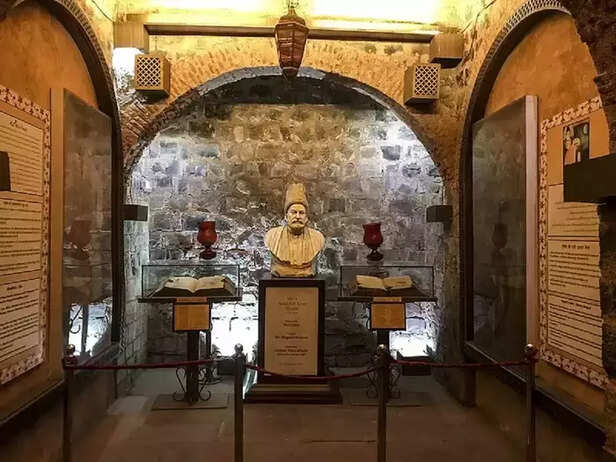
"Na tha kuch toh khuda tha, kuch na hota toh khuda hota,
Duboya mujhko hone ne, na hota main toh kya hota."
When there was nothing, there was God; had there been nothing, there would still be God.
It is my existence that has drowned me; had I not been, what would have been lost?
In the 1990s, recognizing the cultural and historical importance of Ghalib ki Haveli, the Delhi Government and INTACH (Indian National Trust for Art and Cultural Heritage) stepped in to restore it. What emerged was a humble yet poignant museum that invites visitors to walk through the life and works of Mirza Ghalib.
Today, the haveli stands as a tribute to the poet, featuring displays of his handwritten manuscripts, portraits, and other artifacts. The museum is a space where one can feel the pulse of 19th-century Delhi, a city that was both a muse and a stage for Ghalib’s poetry.
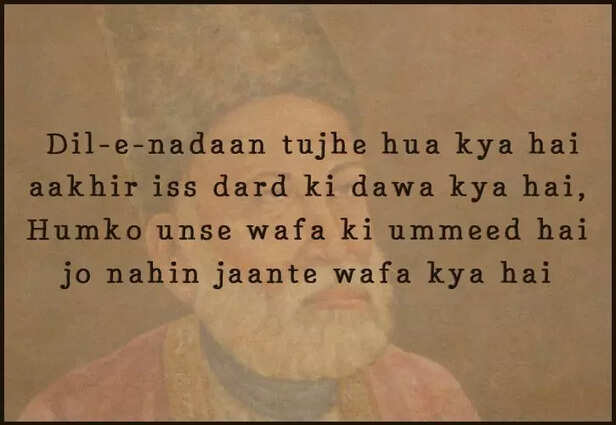
"Bazeecha-e-atfaal hai duniya mere aage,
Hota hai shab-o-roz tamasha mere aage."
The world is a playground for children before me;
Day and night, the spectacle unfolds before me.
Chandni Chowk, with its maze-like streets and vibrant bazaars, was the cultural heart of Mughal Delhi. Ghalib’s haveli, located in the Ballimaran area, was surrounded by the energy of artisans, merchants, and scholars. This environment undoubtedly influenced his work, providing a tapestry of human experiences that found their way into his poetry.
Walking through Chandni Chowk today, one can still sense the echoes of the past. The lanes are alive with history, and visiting Ghalib ki Haveli feels like stepping into a world where poetry was a way of life.
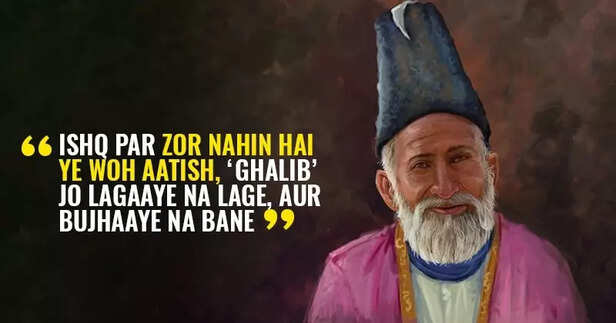
"Dil-e-naadaan tujhe hua kya hai,
Aakhir is dard ki dawa kya hai."
Oh naive heart, what has happened to you?
What, after all, is the cure for this pain?
Ghalib’s ghazals were not just artistic expressions; they were reflections of the human condition. His ability to weave profound truths into simple words made his work timeless. He explored themes like the fleeting nature of life, the pain of unfulfilled desires, and the search for divine connection.
In addition to his poetry, Ghalib’s letters are considered a literary treasure. Written with conversational ease, they provide an intimate glimpse into his life and the socio-political landscape of his time.
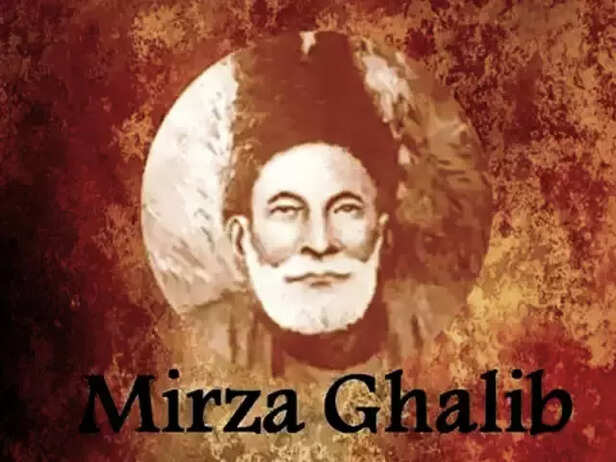
"Har ek baat pe kehte ho tum ke tu kya hai,
Tumhi kaho ke ye andaaz-e-guftagu kya hai."
On every word, you ask, ‘What are you?’
You tell me, what kind of conversation is this?
Despite his literary brilliance, Ghalib’s life was marked by hardship. He often faced financial difficulties, relying on patronage from the Mughal court and other nobles. Yet, his wit and resilience shone through, endearing him to both his contemporaries and future generations.
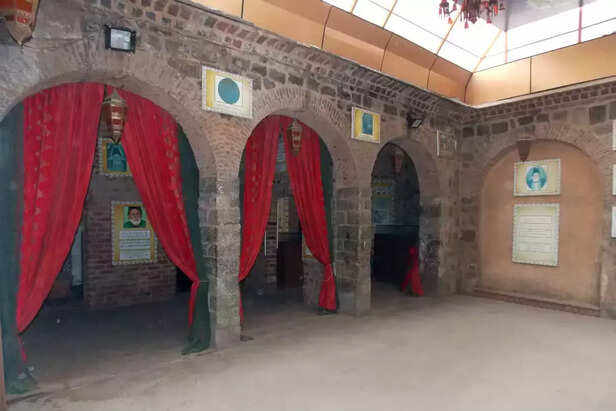
The restoration of Ghalib ki Haveli is not just about honoring a poet but about preserving a slice of India’s cultural heritage. It serves as a reminder of an era when art and intellect thrived amidst political turmoil. Visiting the haveli allows one to connect with Ghalib’s legacy and experience the world that inspired his timeless verses.

"Yeh na thi hamari qismat, ke visal-e-yaar hota,
Agar aur jeete rehte, yahi intezaar hota."
It was not my fate to meet my beloved; had I lived longer, it would have been the same waiting.
As we celebrate Ghalib’s birth anniversary on December 27, his work continues to find resonance in modern times. His poetry has been adapted into films, music, and literature, bridging the gap between generations. His insights into love, loss, and life remain universal, reminding us of the power of words to transcend time.
A visit to Ghalib ki Haveli is not merely a historical excursion; it’s a pilgrimage to the soul of Indian literature. The haveli stands as a testament to the enduring power of art and the indomitable spirit of Mirza Ghalib.
How often do we find ourselves yearning for the timeless verses of Mirza Ghalib, whose words transcend centuries, speaking to the heart like a dear confidant? Born 226 years ago, Ghalib remains an unparalleled figure in the world of poetry, blending the beauty of Urdu and Persian literature with emotions as raw as they are universal. Walking into Ghalib ki Haveli in the bustling lanes of Chandni Chowk, one can almost hear the echoes of his soulful recitations that once graced the walls of this now-restored relic.
This haveli isn’t just a building; it’s a shrine to an extraordinary mind that lived, loved, and lamented in the heart of Mughal Delhi, weaving words that still resonate deeply. As you step through its archways, you’re stepping into Ghalib’s world—a world where poetry was rebellion, introspection, and a quest for eternal beauty.
Who Was Mirza Ghalib?

Mirza Ghalib
( Image credit : Timeslife )
Dhool chehre par thi, aur aaina saaf karta raha."
All his life, Ghalib kept making the same mistake: The dust was on his face, but he kept cleaning the mirror.
Ghalib’s life was a canvas painted with strokes of genius, struggle, and resilience. Born in Agra, he was raised in a family of Turkish descent but was drawn to the cultural vibrancy of Mughal India. At the tender age of 13, he married and moved to Delhi—a city whose chaotic charm would deeply influence his work.
Ghalib was not only a master of Urdu poetry but also a celebrated Persian scholar. His ghazals, infused with themes of love, spirituality, and existential musings, broke conventions and redefined the literary landscape. Yet, despite his fame, Ghalib’s life was far from easy. Financial struggles and personal losses plagued him, but he faced them with a remarkable sense of humor, often reflected in his letters and poetry.
The Charm of Ghalib ki Haveli

Ghalib
( Image credit : Timeslife )
Dard ka had se guzarna hai dawa ho jaana."
A drop's delight lies in merging with the river; when pain crosses its limits, it turns into a cure.
Nestled in the bustling lanes of Ballimaran, Chandni Chowk, Ghalib ki Haveli was once a modest residence where the poet lived and wrote during his most prolific years. This haveli bore witness to his creative genius, his laughter, his musings, and his despair. Its arched doorways and modest interiors echoed with verses that captured the essence of an era.
Over time, however, the haveli faded into obscurity. Encroachments and neglect left it unrecognizable, its significance buried under the dust of modernization. But for the admirers of Ghalib, this wasn’t just a building—it was a shrine to his memory, and it deserved preservation.
The Revival of a Legacy

Ghalib ki Haveli
( Image credit : Timeslife )
"Na tha kuch toh khuda tha, kuch na hota toh khuda hota,
Duboya mujhko hone ne, na hota main toh kya hota."
When there was nothing, there was God; had there been nothing, there would still be God.
It is my existence that has drowned me; had I not been, what would have been lost?
In the 1990s, recognizing the cultural and historical importance of Ghalib ki Haveli, the Delhi Government and INTACH (Indian National Trust for Art and Cultural Heritage) stepped in to restore it. What emerged was a humble yet poignant museum that invites visitors to walk through the life and works of Mirza Ghalib.
Today, the haveli stands as a tribute to the poet, featuring displays of his handwritten manuscripts, portraits, and other artifacts. The museum is a space where one can feel the pulse of 19th-century Delhi, a city that was both a muse and a stage for Ghalib’s poetry.
Chandni Chowk: A City That Shaped Ghalib

Chandni Chowk, Ghalib ki Haveli
( Image credit : Timeslife )
"Bazeecha-e-atfaal hai duniya mere aage,
Hota hai shab-o-roz tamasha mere aage."
The world is a playground for children before me;
Day and night, the spectacle unfolds before me.
Chandni Chowk, with its maze-like streets and vibrant bazaars, was the cultural heart of Mughal Delhi. Ghalib’s haveli, located in the Ballimaran area, was surrounded by the energy of artisans, merchants, and scholars. This environment undoubtedly influenced his work, providing a tapestry of human experiences that found their way into his poetry.
Walking through Chandni Chowk today, one can still sense the echoes of the past. The lanes are alive with history, and visiting Ghalib ki Haveli feels like stepping into a world where poetry was a way of life.
The Poetry That Defined an Era

Urdu Poetry
( Image credit : Timeslife )
"Dil-e-naadaan tujhe hua kya hai,
Aakhir is dard ki dawa kya hai."
Oh naive heart, what has happened to you?
What, after all, is the cure for this pain?
Ghalib’s ghazals were not just artistic expressions; they were reflections of the human condition. His ability to weave profound truths into simple words made his work timeless. He explored themes like the fleeting nature of life, the pain of unfulfilled desires, and the search for divine connection.
In addition to his poetry, Ghalib’s letters are considered a literary treasure. Written with conversational ease, they provide an intimate glimpse into his life and the socio-political landscape of his time.
A Poet’s Struggles and Triumphs

Urdu Poet: Ghalib
( Image credit : Timeslife )
"Har ek baat pe kehte ho tum ke tu kya hai,
Tumhi kaho ke ye andaaz-e-guftagu kya hai."
On every word, you ask, ‘What are you?’
You tell me, what kind of conversation is this?
Despite his literary brilliance, Ghalib’s life was marked by hardship. He often faced financial difficulties, relying on patronage from the Mughal court and other nobles. Yet, his wit and resilience shone through, endearing him to both his contemporaries and future generations.
The Importance of Preserving Ghalib’s Haveli

Ghalib ki Haveli
( Image credit : Timeslife )
The restoration of Ghalib ki Haveli is not just about honoring a poet but about preserving a slice of India’s cultural heritage. It serves as a reminder of an era when art and intellect thrived amidst political turmoil. Visiting the haveli allows one to connect with Ghalib’s legacy and experience the world that inspired his timeless verses.
Ghalib’s Enduring Relevance

Mirza Ghalib
( Image credit : Timeslife )
"Yeh na thi hamari qismat, ke visal-e-yaar hota,
Agar aur jeete rehte, yahi intezaar hota."
It was not my fate to meet my beloved; had I lived longer, it would have been the same waiting.
As we celebrate Ghalib’s birth anniversary on December 27, his work continues to find resonance in modern times. His poetry has been adapted into films, music, and literature, bridging the gap between generations. His insights into love, loss, and life remain universal, reminding us of the power of words to transcend time.
A visit to Ghalib ki Haveli is not merely a historical excursion; it’s a pilgrimage to the soul of Indian literature. The haveli stands as a testament to the enduring power of art and the indomitable spirit of Mirza Ghalib.
